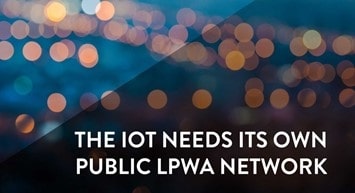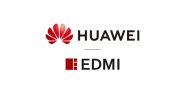To say 2015 was a stellar year for the Internet of Things (IoT) would be an understatement. The market leapt forward with great strides in all areas—number of devices connected, number of new applications, increased level of security, revenue generated…all in all, it was a great year for the IoT. As I look forward to 2016, here are some of the things I think will spur the continued growth of this dynamic market:
#1: 2016 WILL BE THE YEAR WHERE SMART CITY INITIATIVES START TO BECOME STRATEGIC.
To date, most initiatives have been to solve a specific problem, such as parking, and we’ve seen a lot of activity in this area, and in smart traffic solutions. Going forward, however, municipalities will begin to create overall connected city plans instead of solving point problems with point solutions. Connectivity will be the backbone upon which these strategies will be based.
2016 Trends and Outlook Polls
#2: WE’RE ALREADY SEEING THE FALLOUT OF THE 2G SUNSET AND I EXPECT MORE CHAOS IN THE FUTURE AS CELLULAR CARRIERS SUNSET OLDER TECHNOLOGIES.
Think about it: 2G is first, but 3G, and eventually 4G, will be sunsetted as carriers introduce new technologies and new networks. It’s a never-ending cycle of sunsets, all to make data travel more quickly. The reality for the IoT, however, is that the capabilities of existing 2G networks are perfectly suited for most M2M traffic, so these cellular networks are clearly being built for people, not for machine traffic.
John Horn,
Chief Executive Officer,
Ingenu

#3: THERE’S AN AWFUL LOT OF ALPHABET SOUP BEING PUT FORWARD IN TERMS OF CONNECTIVITY SOLUTIONS FOR THE IOT, AND ONE THAT’S GETTING A LOT OF ATTENTION IS 3GPP LTE.
The reality is that 3GPP 5G is at least four to five years away from being rolled out, at best, and customers need answers NOW. Many businesses can’t—and won’t—wait for cellular networks to introduce the next big thing.
#4: ONE OF THE MOST OVERLOOKED FACETS OF IOT SOLUTIONS—LONGEVITY—WILL BECOME A REAL DIFFERENTIATOR IN 2016.
Companies deploying solutions want to be able to “set it and forget it,” and that means battery life will become a huge factor in which solutions will win. We’ve seen tremendous strides in battery life technology that will extend battery life up to 10 years and beyond, and companies will continue to push the envelope to further extend battery life.
#5: LPWA-TYPE NETWORKS ARE EMERGING AS A REAL SOLUTION FOR IOT CONNECTIVITY—AND PROVIDING A STRONG COMPETITIVE THREAT TO CELLULAR NETWORKS.
As traffic demands for machine-to-machine traffic increase, companies will have new options to explore the best and most-cost-effective connectivity fit for their business.
About The Author:
John Horn has more than 20 years of experience in the telecommunications and wireless industries. Mr. Horn is recognized as an M2M/IoT pioneer and leader. Previously serving as President of RacoWireless, a leading provider of M2M connectivity solutions, Mr. Horn led the company to record growth and achievement of multiple awards for accomplishments, including ‘Most Innovative Company’ and ‘Entrepreneurial Company of the Year’. Prior to that position, Mr. Horn was a leader at T-Mobile for more than nine years. At T-Mobile, he developed and managed indirect distribution for the California Launch – the largest launch in wireless history. During his last six years at T-Mobile, he focused specifically on developing T-Mobile’s M2M program and go-to market strategy. He also helped T-Mobile earn recognition as the market leader for M2M services. Mr. Horn also serves on the Board of Directors of Ingenu.



















